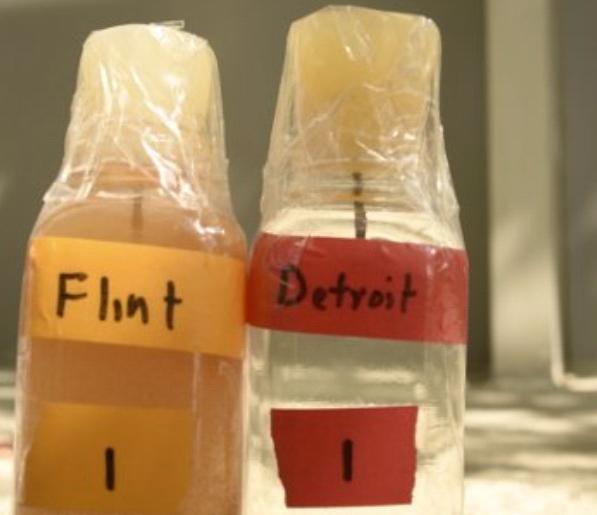Is Flint’s water finally safe? Many still wonder what happened to the water in Flint, Michigan and whether it’s truly drinkable today. The Flint, Michigan water crisis devastated an entire community, exposing thousands to lead poisoning and unsafe drinking water.
More than a decade later, questions remain: Has anything changed? Is Flint still at risk? This article breaks down what happened, what’s been done, and the latest updates on Flint’s water in 2025.
What Happened to the Water in Flint, Michigan?
The Flint water crisis began in April 2014, when city officials switched the water supply from Detroit’s Lake Huron system to the Flint River to cut costs. They didn’t use corrosion control treatments when they did this, so lead and heavy metals leached into the water from old pipes.
Flint residents immediately noticed discolored, foul-smelling water and reported rashes, hair loss, stomach pain and other forms of personal injury. Despite their concerns, officials insisted the water was safe.
By 2015, independent researchers confirmed dangerous lead levels in Flint’s drinking water. In October 2015, the city switched back to Detroit’s water, but the damage had already been done.
The Devastating Impact on Flint Residents
Lead exposure is dangerous for everyone, but young children in particular. Studies show that Flint children exposed to lead now face developmental issues, including reduced IQ, learning disabilities, and behavioral problems.
The crisis also led to an outbreak of Legionnaires’ disease, a severe lung infection, causing at least 12 deaths.
The psychological effects were just as severe. In a CDC survey, more than 50% of Flint households believed their physical health had worsened, and nearly one-third reported symptoms of behavioral health issues like anxiety or depression.
Even today, many residents still don’t trust the water, despite state assurances.
When Did the Flint, Michigan Water Crisis Begin and End?
Although the Flint, Michigan water crisis peaked between 2014 and 2016, its effects continue today. Flint’s water has met federal safety standards since 2016, but public trust remains low.
For the past eight years, Flint’s lead levels have remained below the federal action level of 15 parts per billion (ppb). The latest tests in 2024 show levels at 3 ppb, well within safe drinking limits.
Yet, despite the improvements, many Flint households still don’t trust the water and rely on bottled water instead.
Government Response and Accountability
In response to the crisis, the State of Michigan and the federal government allocated over $450 million for Flint’s recovery.
Key actions included:
- Lead Pipe Replacement: Most of the lead service lines in Flint have been replaced, but many homes waited years for safe plumbing.
- Health and Education Support: Schools in Flint have expanded special education programs due to rising learning disabilities linked to lead exposure.
- Legal Consequences: Several officials—including former Michigan Governor Rick Snyder—faced criminal charges, but some cases were dismissed.
Despite these efforts, many residents feel justice has been slow and incomplete.
Is Flint’s Water Safe in 2025?
According to official reports, Flint’s water in 2024 meets all federal and state safety standards.
However, concerns remain:
- Some older homes still have corroded plumbing, which can cause localized contamination.
- Many Flint residents continue using bottled or filtered water because they still don’t trust the municipal water system.
- Public confidence in Flint’s water system remains low, despite eight years of clean water testing.
The crisis may be over on paper, but its impact continues to be felt daily.
Lessons from the Flint Water Crisis
The Flint, Michigan water crisis exposed major failures in government oversight, infrastructure maintenance, and public accountability.
Key lessons from Flint:
- Public health concerns must never be ignored. Officials dismissed Flint residents’ complaints for over a year while the crisis worse.
- Aging water infrastructure is a national problem. Many U.S. cities still rely on outdated lead pipes, putting them at risk.
- Trust in government is hard to rebuild. Even when water is declared safe, public confidence takes much longer to recover in the wake of such negligence.
How the Flint Water Crisis Changed the U.S.
Since 2016, Flint’s crisis has driven nationwide changes in water safety policies:
- The EPA strengthened lead and copper testing requirements for all U.S. water systems.
- Federal funding for lead pipe replacement has increased, helping prevent future crises.
- Public awareness of water contamination risks has grown, prompting many cities to improve their monitoring practices.
However, other cities are still at risk. Newark, New Jersey, and Benton Harbor, Michigan, have both struggled with high lead levels in drinking water in recent years, proving that Flint’s crisis was not an isolated event.
Flint’s Water Crisis: A Lasting Warning
The Flint, Michigan water crisis was a turning point in American infrastructure policy. While Flint’s water quality has improved, the community is still recovering from the long-term health, economic, and emotional fallout.
For many Flint residents, the crisis was more than a public health disaster—it was a betrayal. Even though lead levels are now low, the fight for justice and lasting recovery is far from over.
Resources:
https://www.michigan.gov/flintwater
https://www.michigan.gov/flintwater/sampling/monitoring
https://cen.acs.org/environment/water/10-years-Flint-Michigan-still-faces-consequences/102/
https://pmc.ncbi.nlm.nih.gov/articles/PMC5353852/
https://www.cdc.gov/casper/php/publications-links/flint-water-crisis.html




